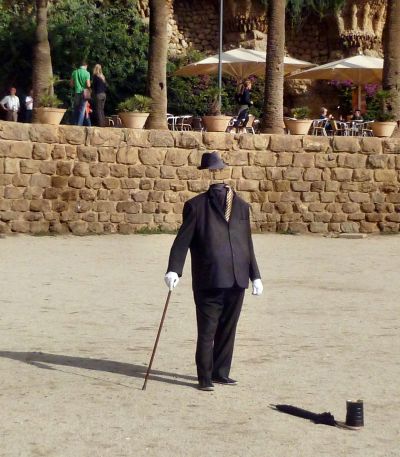How to become invisible: the science behind the fiction

invisibility
By Georges Jansoone (JoJan) (Own work) [CC BY 3.0 (http://creativecommons.org/licenses/by/3.0)], via Wikimedia Commons
The idea of invisibility sounds like something out of science fiction: but could new research turn it from fiction into science? The ambition behind Professor Leonhardt’s ERC- funded research is to trace the connections between abstract theoretical concepts, drawn from geometry and relativity, and their practical implications in fields from materials to photonics. He will be presenting this research to the public at the TEDx Brussels event on 1 December.
The ideas behind the science of invisibility seem to come from a
fantastical realm outside the reach of the laboratory. Yet, the tools
used to investigate this are not in themselves complicated. Prof.
Leonhardt’s work explores the practicalities of invisibility: drawing on
cutting-edge optical science which also has profound implications for
relativity theory.
The science of the everyday
This research is founded on the connection between geometry and
optics: in exploring the space/time curvature for example. This kind of
high-impact physics may seem remote from everyday life but the same
physics governs the optics of magnifying glasses, or the displacement of
objects in water. The best way to describe this process is to think of
fish in an aquarium. We see the fish in places other than where they are
actually located because the water has distorted the images. Our
perception of space is then altered by the water, as our perception is
created by the way in which light perceives the altered space.
The research team are testing this distinction by pushing it to
extremes to see where it can be taken, and whether any new and
intriguing ideas can be developed.
The fundamentals of science
The mysteries of optics have interested scientists for over a
thousand years. They have inspired research into what new technology can
teach us about the intersection between physics and optics. Beyond this
theoretical exploration, Prof. Leonhardt is tracing the potential
practical applications: for example in the sharpness and resolution of
imaging techniques, and the implications for quantum physics. The forces
acting in a quantum vacuum are of particular interest for this project.
Whilst these concepts seem abstract, Prof. Leonhardt explains that the
vacuum is something we experience day-to-day: “These forces are what
make a parking ticket stick to a windscreen. Both surfaces are
electrically neutral but they nonetheless attract each other. The forces
are particularly important for micro-mechanical devices where they may
cause parts of the machinery to get stuck. Our work should aid the
development of frictionless devices. The quantum vacuum is also what
drives particle behaviour at the event horizon, only on a cosmological
scale. This research could shed light on the mysteries of dark energy,
the repulsive force which energises the universe, but about which we
understand very little.”
The appeal of optics
Prof. Leonhardt’s current line of research began fifteen years ago,
when he was giving a lecture course on general relativity. The details
of this were unfamiliar, and it prompted him to think about how to
communicate it clearly, and to explore the connections between what he
was teaching and his background in optics.
This project should enlarge our understanding of the world at both
the small and the cosmological scale. Prof. Leonhardt emphasises that
the ERC’s commitment to funding frontier research means that “ideas
which may seem outrageous can be pursued. Because if they are right they
should be taken seriously, however peculiar they may seem. The
significant thing is what they teach us.”
The world beyond the laboratory
Prof. Leonhardt’s research is highly imaginative, but the tools
themselves are not particularly technical. He believes this is the
source of his appeal to the TEDx audience. He argues that the public can
be “gripped by frontier research without even labelling it as such.
They can then be made to understand that research takes time. We do not
always need to think in terms of applications, though of course these
can and do arise in the course of research. If we don’t support frontier
research we will just carry on refining existing technologies. We may
even run out of ideas.”
Discussing the TEDx event, Prof. Leonhardt is adamant that such
dissemination events are vital because the science is “publicly funded
and so the public should know where the money goes - that it is not
wasted and that it produces interesting ideas and applications.”
The ERC funding is focused on the individual researcher, an emphasis
which Prof. Leonhardt argues ideally suits the generation of ideas.
Flexibility fosters the kind of science where by definition you don’t
know the answers yet. Also inspired by the relationship between
imaginative literature, science and musics, he compares the science he
does to an orchestra “where both the conductor and the varied musicians
are necessary to complete the piece.”
Listen to Prof. Leonhardt on 1 December at 2.15 pm (BOZAR, Salle Henry Le Boeuf).
published: 2015-01-27

